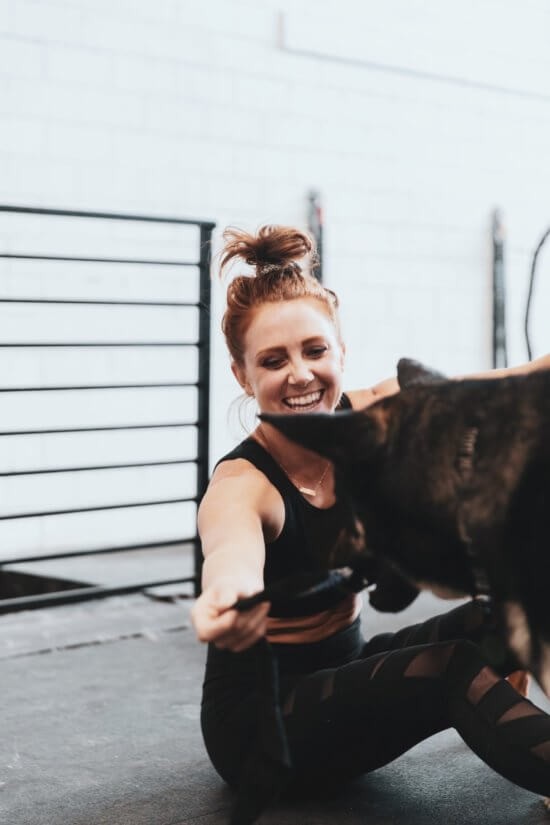We all know dogs are carnivores. But this doesn’t mean they can’t tolerate a limited number of grains, vegetables, and other ingredients in their diet. This leads to many dog owners wondering: can dogs eat quesadillas? Or any other delicious food that we human indulge in?
The question becomes even more burning when you have a set of begging eyes watching you. All pet parents know how dogs literally drool as they watch you eating a human treat. So, should you give the dog a bite?
What are quesadillas and can dogs eat quesadillas at all?

Quesadillas are a Mexican dish containing cheese and other ingredients. The name translated means “little cheesy thing”.
Quesadillas consist of tortillas filled with cheese, sometimes meat and spices, and cooked on a griddle. They are easy to prepare, tasty, and make good use of leftovers, preventing food waste. So, why not give your dog a portion too?
Why is quesadilla not recommended to dogs?

There are multiple reasons why quesadillas are not a good idea for feeding your furry friend:
Cheese is not good for dogs
The main ingredient in quesadillas, cheese, is not recommended to dogs. Cheese is not necessarily toxic to dogs, but it can cause stomach upset. Dairy products contain lactose, and many dogs are lactose intolerants.[1]
In other words, dogs may experience gastrointestinal upset if they eat cheese. Most pets do not have enough lactase in their digestive tract to break down the lactose in milk and dairy.
Many cheese varieties also have a high fat content. Feeding your dog fatty foods regularly can make them gain weight and develop obesity and associated health problems.
Cheese should be offered to dogs only as an occasional treat and in small quantities.
Quesadilla seasoning may cause digestive problems to your dog
Especially when the quesadilla is purchased from a fast-food restaurant, the seasoning can be spicy and contain additives. The dog’s tastebuds will love it, but its digestive system may think something else.
The next thing you know is you are taking your dog to the vet for diarrhea.
Salt is lethal for dogs in large quantities
Never feed your dog salty foods such as pretzels or fast-food that is loaded with salt. The best-case scenario, it will make your dog thirsty. But large quantities may cause sodium poisoning. [2]
Symptoms include vomiting, depressions, tremors, diarrhea, high temperature and seizures. Untreated, this condition can even lead to death.
The tortilla could also be a problem
Most dogs will be OK with eating some tortilla (the flat pancake the ingredients in a quesadilla are wrapped in). Tortilla is unlikely to harm your dog in small to moderate quantities.
But this doesn’t mean you can put your dog on a diet of tortillas. This food is made from grains, which some pets can be allergic or sensitive to. Dogs are carnivores and can eat grains as an occasional snack if they are in good health.
Other toxic ingredients
Two common ingredients that are commonly found in quesadilla are a problem for your dog. These are onions and garlic.
All parts of the onion plant are dangerous for dogs because they contain a substance called N-propyl disulfide. This compound causes anemia in dogs by attaching to oxygen molecules in their red blood cells. [3]
Garlic is also unsafe for dogs and can cause the same problem as onions.
Symptoms of this condition, called hemolytic anemia, include:
- Lethargy
- Loss of appetite
- Abdominal pain
- Drooling and pale gums
- Decreased stamina
- Elevated heart rate
- Loss of coordination
- Vomiting
- Diarrhea
- Discolored urine
It is rare for dogs to die because of garlic poisoning. However, Japanese breeds such as Akita or Spitz are more sensitive to onion and garlic toxicity.
What can go wrong if your dog eats quesadilla?

If your dog occasionally eats quesadilla, it will most likely have an upset stomach. But if you feed it quesadilla and fast-food regularly, your pooch can develop all kinds of health problems:
- High cholesterol levels
This problem is caused by the high content of fat in the cheese.
- Obesity
Eating cheese can lead to increased appetite and weight gain in dogs. Obesity increases the risk of diabetes and other health problems.
- Lactose intolerance and its symptoms
If your dog is unable to break down lactose, it may experience stomach issues after eating cheese.
- Pancreatitis
An unsuitable diet can cause this serious condition, especially in breeds that are genetically prone to pancreatitis.
- Sodium toxicity
Too much salt is harmful to dogs and can make it difficult for the dog to urinate.
- Anemia
The onions that can be found in quesadilla cause anemia in dogs.
- Stomach pain
Dogs would eat anything they can get their paws on, so make sure they have a healthy diet. Otherwise, they will experience digestive upset.
What should you do if your dog ate quesadilla?
Like we’ve said before, dogs would eat almost anything they find. Especially when it smells and tastes appetizing.
Even if you take good care of your dog, it can accidentally ingest prohibited foods. Your dog ate a large amount of quesadilla and not just as a treat? Here’s what you need to do:
Observe the dog for changes
Watch the dog closely for any change in its behavior. The sooner you address the problem, the smaller the damage it will create. Get potential health problems early on by checking for symptoms such as diarrhea, disorientation, and increased thirst.
Offer your dog plenty of water
Your dog will need to drink more water than usually in order to flush out salt from its system. So, provide it with plenty of fresh water.
Talk to your vet
If you are concerned about your dog eating quesadilla, best is to contact your vet. Quesadillas can contain various ingredients that are unsafe for dogs. Call your veterinarian right away if you observe toxicity symptoms in your dog.
Can cats eat quesadilla?
If your dog should eat small amounts of quesadilla just as a treat, you may wonder: can cats eat quesadilla?
The answer is a big no.
Cats are even more sensitive when it comes to their diet.
Felines are exclusively carnivorous, which means all their nutritional needs are met by consuming meat.
Cats don’t need dairy at all. Even if we are used to the image of cats happily drinking milk, this is a mistake. They are almost all lactose intolerant and will adversely reach to cheese. Cats don’t need protein from dairy products such as cheese.
What treats are safe for dogs?

Even if dogs can thrive on commercially available food, you may be interested in diversifying their diet.
If quesadilla and other delicious treats are not recommended, then how can you spoil your four-legged companion? Here are some healthy snacks or complementary food ideas:
- Apples
Apples are some of the healthiest fruits out there and they are packed with nutrients and fiber. You can feed them as snacks after removing the seeds and the core.
- Pears
Pears are overlooked in spite of being very healthy and having a unique aroma. The fiber and vitamins found in pears contribute to better digestion and a stronger immune system. Remove the core before serving.
- Carrots
Carrots are loaded with vitamins, including beta carotene. Prepare bite-sized pieces for a healthy reward!
- Green beans
Green beans, that can be found in quesadilla too, are OK for dogs. But they should be plain and not seasoned.
- Watermelon
Watermelon without seeds and rind is great for hydrating both people and pets.
- Cooked sweet potatoes
Sweet potatoes can be offered roasted or boiled, without seasoning.
- Bananas
One of the best sold fruits in supermarkets, bananas are ubiquitous in our homes. Your dog can have a bite, but in moderation due to the high sugar content of this fruit.
- Strawberries and blueberries
Loaded with vitamin C and other vitamins, berries are OK as an occasional treat. Limit the amount of sweeter fruityou feed your dog (strawberries).
- Broccoli
Both kids and doggies will benefit from this vegetable, whether it is raw, roasted, or steamed. If you give it to your dog, keep it unseasoned. Cooked is better because raw high-fiber foods may be a little more difficult to digest.
- Celery
Celery is low in calories and contains vitamins A, B, and C. Give celery to your dog if they like crunchy treats.
- Cucumbers
Cucumbers contain lots of water and are great for hot days. They are also loaded with potassium, magnesium, copper, biotin, and multiple vitamins. Cucumbers deliver phytonutrients that reduces bacteria causing bad breath.
Can dogs eat quesadilla? -Final Word
Final answer – preferably not.
If you can’t resist your dog’s strategies of getting a bite of your human food, a limited amount is OK.
Only feed quesadilla to your dog if it is not too spicy, not too salty, and without onions and garlic. Spices, salt, onions and garlic are those ingredients that could harm your dog the most.
Offer this treat only if your dog does not have severe lactose intolerance symptoms and is not allergic to grains.
Giving your dog a heathy canine diet will definitely help you stay on the safe side.
